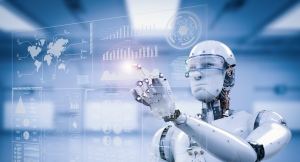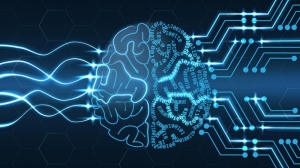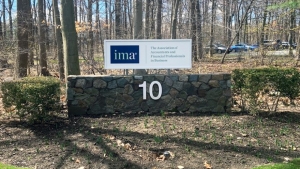عرض العناصر حسب علامة : أتمتة العمليات الروبوتية RPA
الإثنين, 03 أكتوبر 2022 13:15
كيف يقوم أحد برامج المحاسبة بتعريف الطلاب على تقنية أتمتة العمليات الروبوتية RPA؟
معلومات إضافية
-
المحتوى بالإنجليزية
March 9, 2021
Get started with robotic process automation
December 8, 2020
9 tips for teaching data analytics
TOPICS
Accounting Education
Technology
Emerging Technologies
Bryant Richards knew little about robotic process automation (RPA) when accounting firms recruiting at his school, Nichols College in Dudley, Mass., began saying his students should learn the skill. The push led Richards, an associate professor of accounting and finance, to learn more about RPA, and then to create RPA internships, advocate for the inclusion of RPA in the business core curriculum, and conceive of the college’s Center for Intelligent Process Automation. Richards talked with Extra Credit about how and why to incorporate RPA into accounting programs, and how students react to learning this emerging technology.
How did you first get into robotic process automation?
Richards: It started with our stakeholders, such as trustees, alumni, and employers, saying, “Your students need to have RPA,” and I said, “What’s RPA?” They gave me quick insight into it. It took me two years of research and studying and practice to get myself up to speed.
Why is there so much buzz around RPA right now? Why do you prefer the term “intelligent” process automation to “robotic” process automation?
Richards: With RPA, you are recording instructions that enable a system to repeat digital tasks. Anything digitized that you can do with a computer can, for the most part, be recorded in the form of instructions, and that’s not necessarily new. What’s new about this is that now average users can easily learn how to do it and create powerful automations.
The “intelligent” part comes in when you add artificial intelligence that allows you to explore certain things with prebuilt analysis, to do types of complex analysis such as sentiment analysis. What I think we’ll see in the future is a lot more deployment of artificial intelligence where things will get a lot more, dare I say, intelligent and advanced.
Why is it important that accounting students learn about RPA?
Richards: The big accounting firms all say RPA is something they’re training their folks to understand and use now. They’re sending the message that, if students learn how to do this, it would be very useful to them in their careers. Larger companies are also starting to send that message.
Teaching RPA is a brilliant way to help students experience difficult-to-teach accounting concepts, even if they never end up using it in their careers. When trying to create a “bot,” or software robot, that performs a reconciliation, students explore all the facets of that reconciliation, and it really encourages them, if not forces them, to learn it a new and deeper way. They never forget it [after that].
How do you integrate RPA into your accounting curriculum?
Richards: As of this semester, we introduced one week of RPA training into every one of our introductory information technology classes. Every student who goes through our business core will be exposed to RPA.
We also offer research associate internships, in which students advise companies. Twenty students have completed the internships over three semesters, and I expect to turn the internships into a course in the future. We get students building bots, and we slowly pull the training wheels off and get them doing deep analysis. Usually, by the end of the semester, I’m having them work with a client or solve a problem.
Do students struggle with RPA, or do they pick it up easily?
Richards: At least half the students are apprehensive, if not scared, to start with. Once they get through creating their first four bots, they start getting excited, especially if their bots work. Toward the end of the semester, they feel empowered and they can’t believe what they can do with it.
The accounting students are feasting on this [technology]. For some reason it comes more naturally to them.
Can you give me some examples of “bots” accounting students have created?
Richards: A large bank would dump applications into an Excel file which needed to be typed into another system. A student created a bot that simply read the files and punched the data into the bank’s software program. I’m pretty sure it saved the bank a significant amount of money.
Another student worked for a small public firm, and his role was to go to restaurants and do their accounts payable every week. He saw how that process could be automated. His bot saved him 5 to 6 minutes per client, and he had 30 to 40 a week.
Which software do you have students use?
Richards: We used UiPath, software that is fairly user-friendly and provides a lot of training and academic support. They gave us a free community license.
We recently signed an agreement with NICE Systems to have them be our provider of software in the future. The partnership agreement with NICE gives us the ability to leverage their software for Nichols College while we teach our students.
What advice would you give faculty members who are new to RPA about incorporating it into their classes?
Richards: This technology is coming, and they should be up on it. They are more than welcome to reach out to me.
To understand it, you really need to build a bot. UiPath and NICE have some nice starter training courses that can help you create a quick bot on your own.
I think as faculty we feel like we have to learn stuff before we teach it. But you don’t have to be an expert at RPA to roll it out to students and get them exploring accounting concepts with it in a meaningful and valuable way. The tool might be new, but many of us have significant expertise in the related skills.
What is the Center for Intelligent Process Automation?
Richards: The Center for Intelligent Process Automation (CIPA) will focus on three overlapping objectives: adopting technology for Nichols College to become a showcase for higher education; providing thought leadership and support to underserved communities throughout industry and higher education with a focus on improving accessibility; and providing student opportunity and experience, as it will primarily be staffed by trained student workers. We announced the center, in concept, in September 2020 and will release more information soon.
As we did research, we found two primary skills gaps in the accounting profession, one that is tool- and technology-based, and one around the process, data, and architecture skills associated with automation. Nichols College is good at training on business-user tools. We want to tell the profession: We’re going to help with this problem. We’re going to commit resources. We're going to make sure the skills gap shrinks.
The AICPA offers a certificate in robotic process automation. Educators can receive a discount on AICPA certificates.
نشر في
تكنولوجيا المعلومات
الإثنين, 03 أكتوبر 2022 12:52
ماذا تتوقع من الذكاء الاصطناعي 2.0؟
الذكاء الاصطناعي في أيام مجده الآن، مع تطبيقاته الموعودة التي يتم تحقيقها في مجموعة من مجالات الخدمة للمحاسبين
معلومات إضافية
-
المحتوى بالإنجليزية
AI, applied: What to expect from AI 2.0
By Ranica Arrowsmith
Artificial intelligence is in its glory days now, with its promised applications being realized in a range of service areas for accountants. But AI is for more than just automating processes and creating efficiencies — now is the time for firms to be creative, thinking about new industry-specific applications and firm-specific pain points where AI can play a role.
Springboarded by the establishment of its AI lab in 2019, Top 100 Firm Armanino has been seriously investing in artificial intelligence with an eye on remaining ahead of the curve on efficiencies and client service.
In 2020, the COVID-19 pandemic accelerated the adoption and development of many different technology areas. AI was one of them. Tom Mescall, partner-in-charge of consulting at Armanino, shares his thoughts on what artificial intelligence will bring to the accounting profession in the near future.
Industry-specific applications
“As we continue to invest in artificial intelligence, it’s going to be by industry,” Mescall said. “As we’ve gotten deeper into industries like SaaS, digital media advertising, nonprofits, performing arts, social services, real estate, hospitality, real estate, construction, it’s clear that the use of robotic process automation, AI and data analytics becomes pretty industry-specific.”
Many accountants choose to serve very specific verticals, getting to know them well
The importance of bots
A bot is essentially an AI program written to perform certain tasks, which can be very tasks, and they can be applied/deployed in any area that can be automated.
“Bots have been the area where CFOs have specifically looked to find efficiencies out of things like the month-end close, approvals and expense reports,” Mescall said. “Anything that needs to be approved is great for a bot. You can get program rules, validations and checks just like a human would do.”
Bots have been around for years — but now their technology is more sophisticated and usable than ever.They provide an opportunity for firms to solve targeted problems and gain efficiencies without a necessarily high investment.
“In the past 10 months, the deployment of bots has really accelerated,” Mescall added. “In the past, we were demystifying AI — it was on people’s tongues, but they didn’t know how to use it
Now companies are saying. ‘I have to use it because I need to be efficient.’”
Read more of Mescall’s thoughts here.
نشر في
تكنولوجيا المعلومات
موسومة تحت
الإثنين, 10 أغسطس 2020 10:07
أتمتة العمليات الروبوتية RPA وسط جائحة كورونا
نشر في
تكنولوجيا المعلومات



